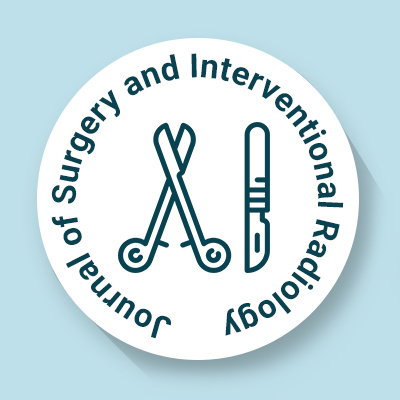
Journal of Surgery and Interventional Radiology
OPEN ACCESS

OPEN ACCESS
Minimally invasive procedures (MIPs), also referred to as minimally invasive surgeries, represent a paradigm shift in surgical practice, focusing on techniques that limit the size of incisions required. This approach aims to reduce wound healing time, associated pain, and the risk of infection compared to traditional open surgeries. The evolution of medical technologies has facilitated the development and widespread adoption of these procedures, offering patients less traumatic alternatives with potentially faster recovery periods.
Historically, surgery has been synonymous with invasiveness, necessitating significant incisions to access internal structures. Such open surgeries often result in large wounds, leading to prolonged healing times and increased postoperative discomfort. The advent of MIPs marked a significant departure from this norm. Interventional radiologists were pioneers in this field, introducing techniques like angioplasty and catheter-delivered stents. By leveraging imaging modalities, they navigated instruments through the body via catheters, obviating the need for large incisions. Consequently, numerous conditions that once mandated open surgery can now be addressed non-surgically.
The scope of MIPs encompasses a variety of procedures across multiple medical specialties. For instance, endovascular aneurysm repair has become the predominant method for addressing abdominal aortic aneurysms in the United States. This technique involves smaller incisions compared to traditional open aortic surgery, thereby reducing patient morbidity. Similarly, arthroscopy allows for joint examinations and treatments through small incisions using an arthroscope, minimizing tissue disruption and expediting recovery. Laparoscopy, another cornerstone of minimally invasive surgery, enables operations within the abdominal or pelvic cavities using small incisions and a camera, reducing hemorrhaging and shortening recovery times. In the realm of thoracic surgery, video-assisted thoracoscopic surgery (VATS) utilizes a small video camera mounted on a thoracoscope to perform procedures within the chest cavity, offering a less invasive alternative to traditional thoracotomies. Furthermore, minimally invasive cardiac surgeries, such as off-pump coronary artery bypass grafting, are performed through small incisions without the need for cardiopulmonary bypass, thereby reducing operative trauma and enhancing recovery. Image-guided surgeries also fall under the umbrella of MIPs, where surgeons employ tracked instruments alongside preoperative or intraoperative imaging to navigate procedures with precision, thereby minimizing collateral tissue damage.
The benefits of MIPs are manifold. Patients typically experience less postoperative pain, reduced scarring, and shorter hospital stays. The diminished trauma to tissues often leads to quicker recoveries and a faster return to daily activities. Additionally, the risk of postoperative complications, such as infections and adhesions, is generally lower compared to open surgeries. For example, in dental implantology, minimally invasive methods not only decrease costs but also shorten rehabilitation times. However, it is imperative to substantiate the safety and efficacy of each minimally invasive procedure through rigorous randomized controlled trials to ensure optimal patient outcomes.
Despite their advantages, MIPs are not devoid of risks. Potential complications mirror those of traditional surgeries and include bleeding, infection, organ injury, and thromboembolic events. Specific to certain minimally invasive techniques, there may be an increased risk of hypothermia and peritoneal trauma due to exposure to cold, dry gases during procedures like insufflation. Implementing surgical humidification therapy, which involves the use of heated and humidified carbon dioxide, has been shown to mitigate some of these risks. Therefore, a thorough patient evaluation and meticulous surgical planning are paramount to minimize potential adverse outcomes.
In scenarios where non-invasive methods are insufficient, minimally invasive techniques serve as valuable alternatives to open surgeries. Procedures such as hypodermic injections, endoscopies, percutaneous surgeries, laparoscopies, coronary catheterizations, angioplasties, and stereotactic surgeries exemplify this approach. These techniques aim to achieve therapeutic goals while minimizing physical trauma. Conversely, open surgery involves larger incisions to access internal structures, often requiring extended recovery periods. While open surgeries remain indispensable for certain complex conditions, the continuous advancement of minimally invasive techniques is progressively expanding their applicability, offering patients safer and less traumatic options.
In conclusion, minimally invasive procedures have revolutionized surgical practice by prioritizing patient safety, reducing recovery times, and minimizing postoperative discomfort. As medical technology continues to evolve, the scope and efficacy of these procedures are expected to broaden, further solidifying their role in modern medicine.